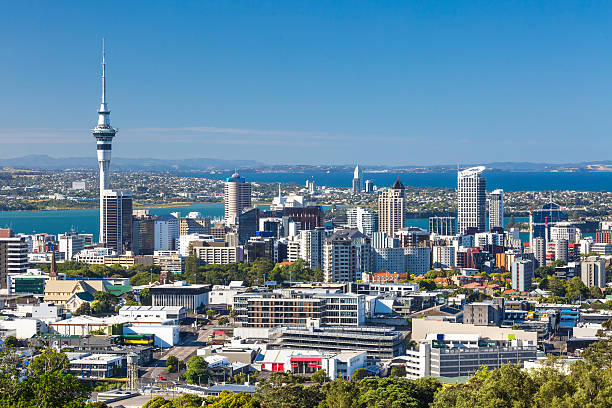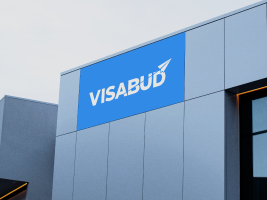Bolivia Travel Guide: All you need to know to visit Bolivia in 2024
Welcome to Bolivia
Bolivia Travel Guide
Around 10 million people call Bolivia, which is in South America, home. La Paz has a population of about 2.5 million and is Bolivia’s capital. In this comprehensive guide to traveling to Bolivia, We go through all the information you require, from the finest meals and drinks to the ideal times to visit and what not to pack—Discover Bolivia’s traditions, past, and sceneries.
Document checklist for Bolivia
Visa
Health declaration documents
Valid passport
Sufficient funds
Return airline ticket
Essential Bolivia travel information
Currency – Bolivian Boliviano (BOB). Approximately 6,94 BOB is equal to $1.
Daily budget for one person – In Bolivia, a vacation may cost you BOB 298 (about USD 43) each day.
Languages – Although Spanish is the official language, 36 Indigenous languages are also used throughout the country, with Guarani, Aymara, and Quechua being the most popular.
Socket type – There are two related plug types, types A and C, for Bolivia. Bolivia uses 230V and 50Hz for electrical power.
Time zone – Bolivia Time is the time zone. (GMT-04:00).
Top 3 cities to visit – La Paz, Santa Cruz, and Cochabamba.
The top 3 landmarks/monuments are Lake Titicaca, Salar de Uyuni, and the Jesuit Missions of Chiquitos.
Visa information for Bolivia
Travelers will always need a visa to travel to Bolivia. Therefore, it is necessary to meet all the prerequisites to apply for or possess a visa to travel to Bolivia.
Passenger Locator form
All travelers entering the country, whether domestic residents or visitors, must complete the Passenger Locator Form. This document is only suitable for a single entry and does not substitute for a visa.
Typical costs and budget for Bolivia
Daily spending per person – The average daily budget is 298 (or 43 USD).
Meals – The average daily expenditure on food is BOB 97 (USD 14).
Transport – Public transportation costs around BOB 65 (9.32 USD).
Hotel – It may cost BOB 92 (USD 13,19) for a single room and BOB 181 (USD 26,24) for a couple.
A weeklong vacation to Bolivia typically costs BOB 2,032 (USD 293,66) per person. As a result, a weeklong journey for two people to Bolivia costs about BOB 4,072 (USD 587,47).
Transport and ways to travel around Bolivia
Train: Trains go from El Alto to the Tiwanaku ruins, stopping at Guaqui on Lake Titicaca as their final destination. If you decide to adopt this vacation schedule, this is a commonly used mode of transportation to explore these locations.
Bus: Locals frequently use this affordable mode of public transportation to explore the area and take in the variety of the surroundings. Due to the numerous bends, elevation changes, and varied terrain, this means of transportation is best suited for daring individuals.
Taxi: Taxis are available in most of Bolivia’s main cities—an inexpensive, simple, and secure approach to settling in the towns.
Renting a car with a local driver who can drive them to tourist attractions is preferred by many tourists.
Aircraft: If you need more endurance to get around by Bolivia’s buses, you may reach your final point via one of the country’s domestic flights.
Safety in Bolivia
Bolivia is among the safest countries in Latin America, making it a safe place to go. However, take care of your stuff whenever you travel since there are still risks, including theft, that you must be aware of.
Weather in Bolivia
The ideal time of year to experience nature is during the peak season, May through October. Temperatures below -15°C are not uncommon in high altitudes; nevertheless, the climate is often warmer and less humid in low altitudes.
Discover the Salar of Uyuni’s vistas and learn more about the local culture during the low season (December to March). Despite the lack of rain, this is the time of year that rains—a great time to see northern Bolivia and go to Uyuni’s salt mines.
Popular Cities and Towns in Bolivia
The largest city in Bolivia is Santa Cruz, located in the country’s east. Santa Cruz is well-known for its pleasant weather, welcoming residents, and unique tourist sites such as national parks and the Amboró National Park.
La Paz is a fascinating place to discover. Here, you may go more quickly by using the Teleferic. Furthermore, a great perspective is available by climbing the Alto in addition to its luscious mountains.
Another name for Cochabamba is “City of Eternal Spring.” If you visit this city, which is regarded as Bolivia’s culinary capital, sample some local cuisines.
Must do and see in Bolivia
Madidi National Park: This park spans the Amazon River to the Andes Mountains – a region with a remarkable diversity of wildlife, including jaguars, titi monkeys, and others.
Lake Titicaca: Lake Titicaca is the world’s most excellent navigable lake. A holy location for many people, with breathtaking vistas and exploration opportunities, is where the Inca Empire is thought to have originated. In addition, you may take a boat from Copacabana to Isla del Sol, another fantastic site.
Jesuit Missions: In the 16th century, the Jesuits founded ten missions around Santa Cruz, six of which UNESCO designated as World Heritage Sites. It’s undoubtedly one of the fascinating locations with a rich history you must see. It’s a fusion of the ancient and the contemporary, representing Bolivia’s cultural heritage with its enduring history.
Typical Bolivian food to try
Salteas: it is a dish that is quite common in Bolivia. They are baked empanadas stuffed with chicken, pig, or beef. They also have a vegetarian option.
Silpancho: It is a typical Cochabamba dish. White rice, sliced and cooked tomatoes, minced pork, onion, and a fried egg are all included.
Coca-tea is a holy beverage for many Native American tribes in South America’s Andes and is consumed for several ceremonial and therapeutic purposes. For example, they brew an infusion of dried coca leaves known as “mate de coca” to counter the symptoms of altitude sickness.
Vaccine information for Bolivia
The CDC website has yellow fever and Covid vaccination information and other health recommendations for your trip to Bolivia.
Fun Facts About Bolivia
- Bolivia is home to the most extensive salt flat in the world. The Salar de Uyuni, often called the Largest Mirror on Earth, has a total size of 10,582 sq km and is located 3,656 meters above sea level.
- San Pedro, a jail in Bolivia, is well-known for allowing inmates to live with their families – a prison significantly distinct from others throughout the globe.
- Pink dolphins are a well-known attraction in Bolivia. The Amazon is home to the pink dolphin, regarded as the dolphin species with the highest level of intelligence.
- Two capitals serve Bolivia. La Paz is one, but Sucre is Bolivia’s official capital.
Related Articles

5 min read
New Zealand Introduces Key Changes to Post Study Work Visa : What You Should Know
According to the government, this change will provide students with greater flexibility in their academic choices while ensuring they remain eligible to work. For many students, studying abroad is a
Read More
5 min read
The Singapore visa processing time for Indian citizens
Singapore is a small island located in the Malay Peninsula in Southeast Asia. It is one of the most economically developed countries in the world. Singapore is a fantastic place
Read More
5 min read
How Much Does an Australia Trip Cost from India?
If you are planning a trip from India to Australia, you must follow some of the points. that are : Planning Budget Traveling date and time To which place you
Read MoreThe British High Commission issues single-entry and multiple-entry visas to Indian nationals. A single-entry visa is only suitable for three months; multiple-entry visas are good for three months, six months, a year, and three years.
It is crucial to take careful notice of the permitted entry types. For example, a single-entry visa only permits its holder to enter and leave Bolivia once instead of multiple entries, which would allow repeated entries.
The earliest date to apply is three months before the intended date of the journey to Bolivia. However, it is advised that all visa applications be filed at least two weeks before departure to give enough time for visa processing.
The registration must be submitted at least four weeks before departure to a British Embassy in India.
Yes, a scheduled meeting is required to provide your fingerprints and file your immigration paperwork for a Bolivia visa.
To provide your biometrics and submit your immigration papers for a Bolivia visa, a planned appointment is necessary.
